Projector
Monitor
Lighting
Interactive Display | Signage
Remote Work & Learning
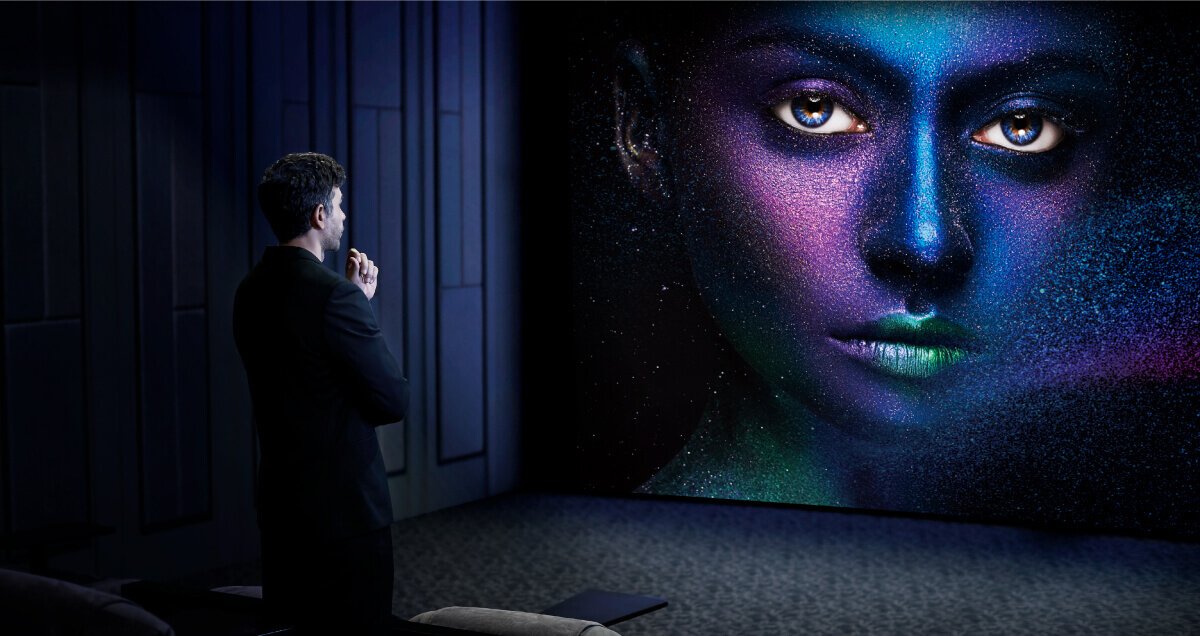
Video presented through HDR technology is capable of showing more detail and color for a more accurate depiction of light and dark areas of any given image. Therefore, HDR has become an important spec that both professionals in the media industry and entertainment enthusiasts are pursuing. Now, as a long term developer dedicated to better representation of higher image quality, BenQ has developed exclusive HDR-PRO technology, used in creating projectors that represent accurate color and dynamic contrast, and thus allowing consumers to enjoy cinematic visual experiences that remain faithful to the original intent of their creators.
HDR, or High Dynamic Range, is a standard that offers a higher dynamic range in video signals, allowing an image to be shown with more brightness and increasingly detailed color tones. HDR enhances the light areas of the image while also allowing dark areas to be shown in deeper contrast, representing the original image more completely and faithfully, and closer to what the human eye can see.
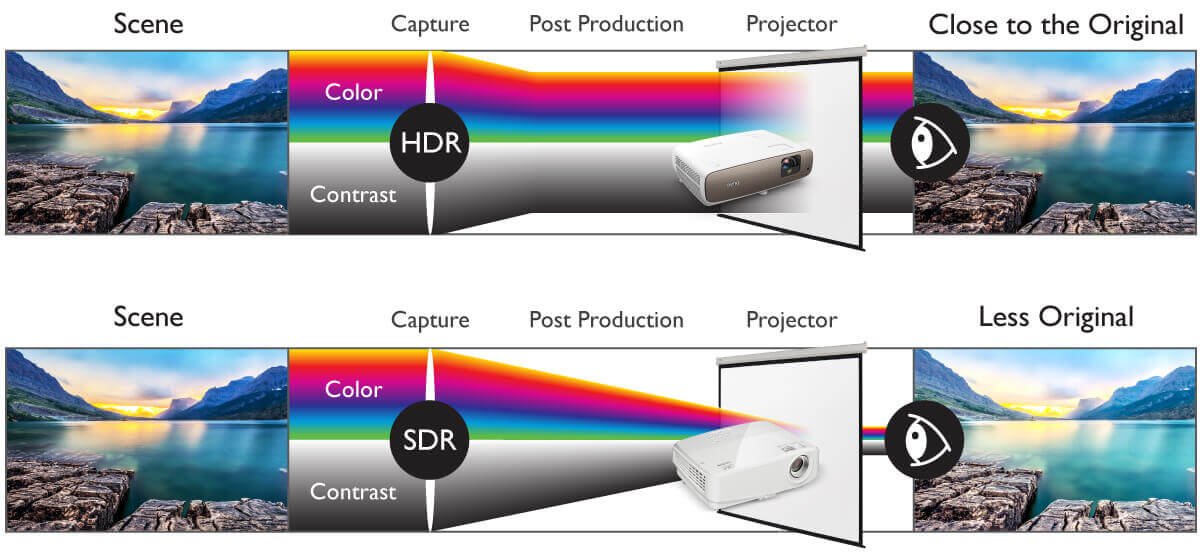
In this series of articles, we’ve introduced the basic definitions of HDR and gained a better understanding of filming and doing post-production for HDR video. In the previous article, we discussed whether there is true HDR for projectors. In that article, we showed that even though the maximum brightness of projectors is limited, with the latest technology manufacturers are trying to give consumers a viewing experience that is closer to watching a film at the cinema.
Other than LCD TVs and display panels, BenQ also puts great effort into developing projectors by integrating software and hardware technologies to present an authentic HDR image, which allows consumers to view content with more detail and better picture quality.
Since different devices have different specs, which might cause the color and brightness to differ from the original content as it was intended to be shown, many projectors are equipped with Color Mapping and Tone Mapping functions. These features are designed to present the best results by taking the specs of the projector itself into account. BenQ HDR-PRO projectors are designed with Tone Mapping in mind, making sure the images being projected are all based on accurate calculations and precise projection, showing more details with more dynamic range in both light and dark areas. Therefore, Tone Mapping can bring the original visual elements to audiences and provide an authentic viewing experience that is very close to a cinematic release.
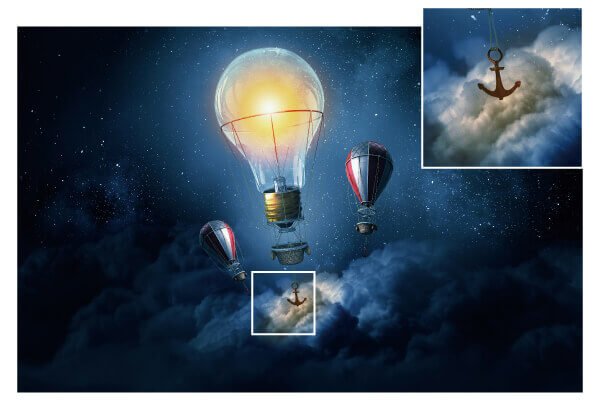
BenQ HDR-PRO Projector

Others
To make Tone Mapping work even better, BenQ uses Dynamic Black technology for different light sources. With Dynamic Black™ technology and proprietary deep dark sealed coating optical engine, BenQ projectors create a very wide dynamic range. Whether the original scene is very bright or dark, consumers get much clearer images that reveal details not seen with lesser projectors.

More light output during bright scenes

Less light output during darks scenes
Most projectors on the market focus on either performance in light or dark areas and some even sacrifice realistic image delivery to maintain a contrast ratio that falls within a range that qualifies as HDR. With Dynamic Black, projectors can decide the output value of projection by controlling the optical system of the projector based on different content or different scenes. Therefore, the technology optimizes the contrast of scenes and brings everything closer to the director or creator’s original intended vision.
The brightness of an HDR projector, unlike HDR monitors, is not based on fixed values from the signal assigned to it, but varies depending on the distance between the projector and the screen, screen size, and the material of the screen. Therefore, BenQ HDR-PRO projectors provide five different recommended HDR Brightness values for popular home projector screen sizes*. It is also equipped with brightness control so users can change the brightness level based on screen size to enjoy the best viewing experience. (*common home projection screen sizes are 80”, 100”, 120”, 150”, and 200”)
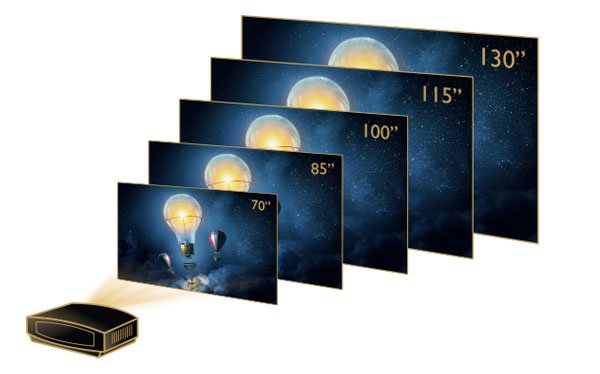
BenQ HDR-PRO projector
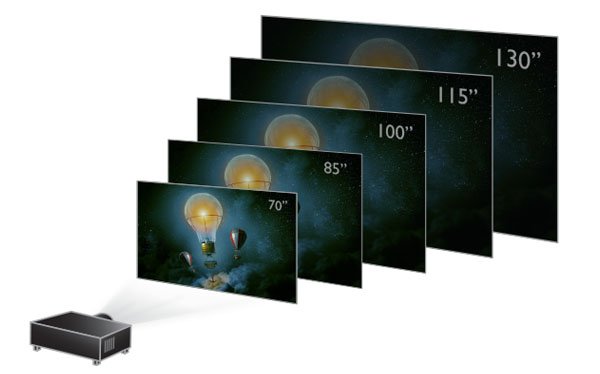
Less light output during darks scenes
In addition, BenQ HDR-PRO technology does not simply focus on providing the highest maximum brightness to show a more dynamic range, but instead provides sufficient and comfortable brightness choices in order to avoid long term eye fatigue. This feature also presents a more detailed and realistic image in a way that is best suited for human eyes.
With HDR Brightness, Tone Mapping, and Dynamic Iris, BenQ can project video with added dynamic range. For example, they allow the projector to show the difference between a star and dark, empty space in a sci-fi interstellar scene, allowing the audience to be fully immersed in the cinematic universe and have an experience that is very close to the one they get at a theater.
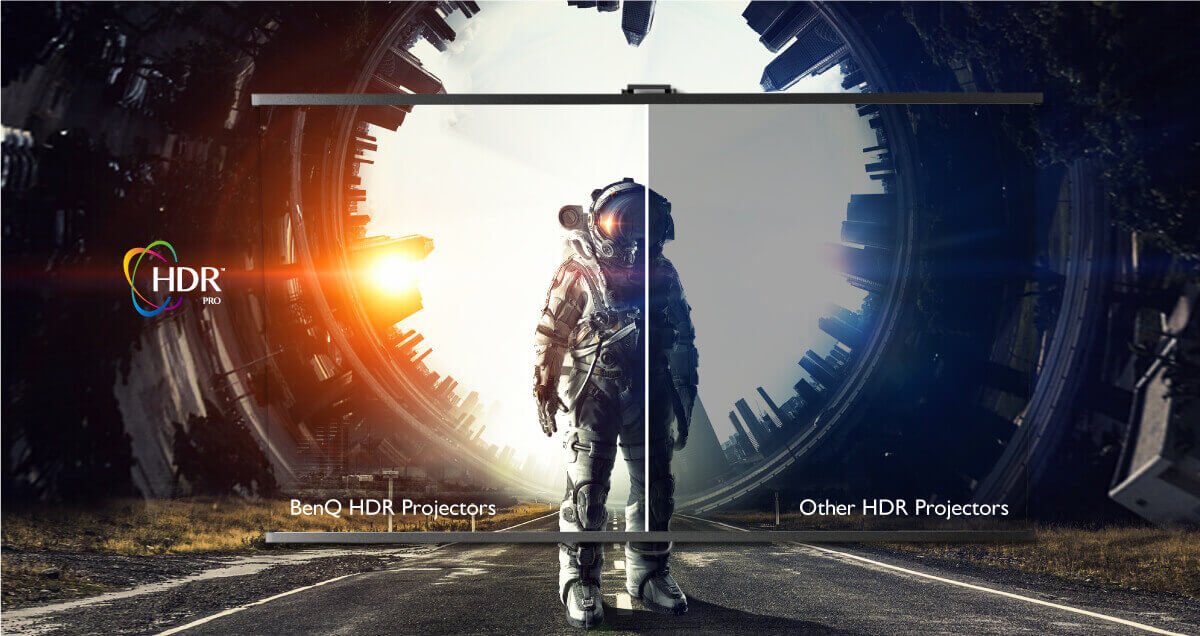
A comparison between BenQ HDR-PRO projector and others in terms of brightness and contrast of the projected image
With a more dynamic range available come more details: metallic surfaces, rock cliffs, and human hair are all prime examples. BenQ’s outstanding HDR-PRO technology does not overexpose light areas or make dark areas too dim in order to pursue a simple, preset high dynamic range. The emphasis is on providing smooth gradation of contrast and the overall visual experience to give audiences the best image possible.

Textures and details comes to life, from metal and wood to human characters
Wide color gamut is also crucial for HDR. Therefore, BenQ developed its own CinematicColor Color management technology. It not only matches the wide color space set by the film industry, but also provides an exclusive, dedicated manual calibration mechanism to present images with accurate color, saturation, brightness, and color temperature. Coverage reaches 100% Rec. 709 color gamut with Delta E<3, and even meets the requirements of DCI-P3 cinematic wide color gamut. The Color Mapping function of the projector can also automatically adjust the color of HDR content to the richest and most accurate color in any condition.

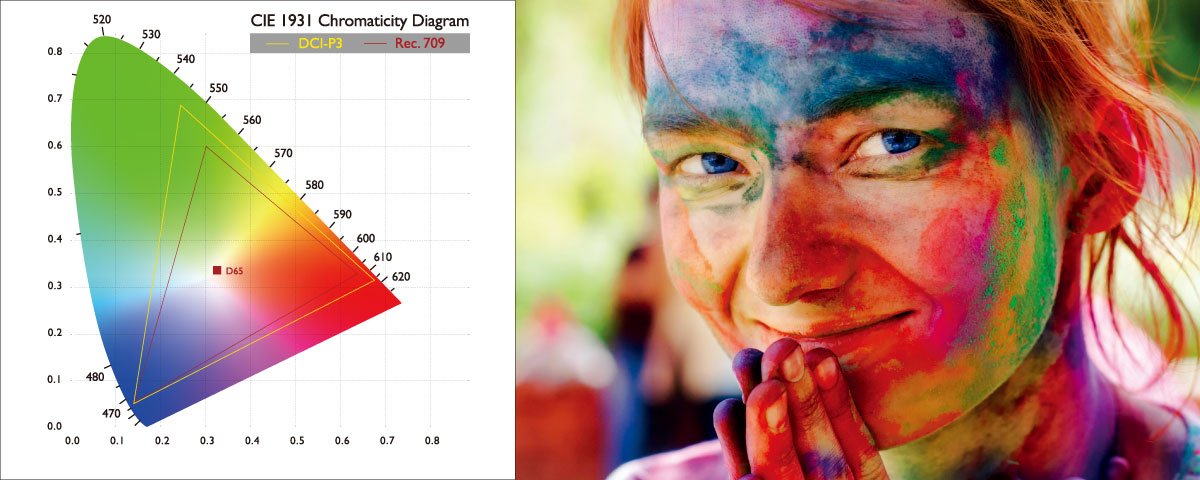
To present content with higher image quality, contemporary display devices like TVs and monitors are usually developed with three aspects in mind: true 4K resolution, wide color gamut, and high dynamic range. All of them try to show images with high resolution, high contrast, and accurate color.
BenQ true 4K HDR projectors deliver 8.3 megapixels and support DCI-P3 color gamut. These two features are crucial and inseparable from HDR presentation. For example, the specially-designed high end 4K lens on the projector comes with all glass elements, providing the advantage of large aperture and low dispersion and making the image bright and clear. BenQ exclusive HDR-PRO natural color restoration technology not only shows the wide color gamut in more detail and closer to original colors, but also depicts authentic, natural images with higher dynamic range in light and dark areas.


4K resolution and DCI-P3 depict authentic and natural images with higher dynamic range in light and dark areas.

Since the brightness that viewers perceive in an image presented from a projector varies by screen size, the distance between the projector and the screen, screening environment, and the material of the screen, there are a few things that users should be aware of:
Users should try to watch content in a completely dark environment without ambient light to eliminate the possibility that the image projected may be affected by other light sources, which could reduce perceived image quality. Having any other light source can hinder the accurate performance of light and dark details, which is the goal of having HDR content. The color perceived by the audience may also be misrepresented due to an external light source. If users can watch HDR content in a fully dark environment, they can enjoy a more immersive viewing experience as if they are in a theater. If they use BenQ projectors that support DCI-P3 color gamut, the color will be even richer and more accurate.
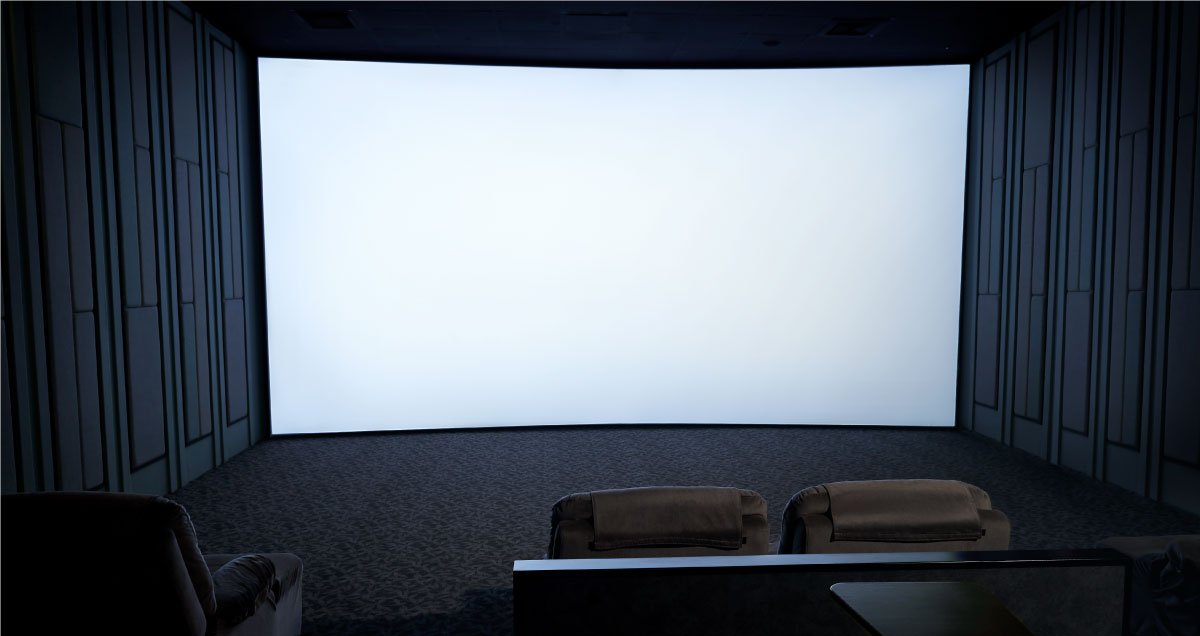
Screen size also affects the brightness of projection. With the same projector, the smaller the screen, the brighter the image and vice versa. A screen with a higher gain value (an index measuring how reflective a screen is) will brighten the projected image, while a screen with a lower gain value will darken the dim areas, showing more black details and tonal changes.
BenQ HDR-PRO projectors are also equipped with a zoomable lens, ideal for use in various spaces. Without changing too much of the interior decoration, users can enjoy the best audiovisual experience. Before installation, we recommend you use the BenQ Projection Calculator measuring tool for the best placement.
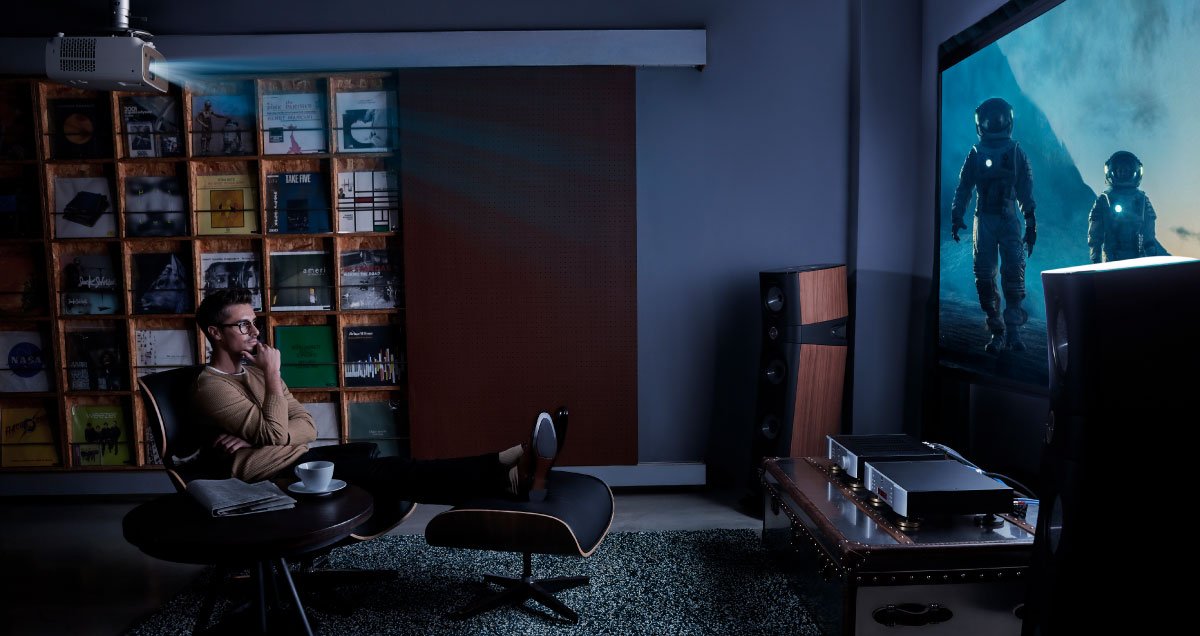
Deciding the distance between the projector and screen
To fully enjoy watching HDR content with 4K projectors, prepare a 4K HDR player and 4K HDR-authored content. When choosing the content, we recommend videos with higher brightness, more contrast, and more saturated colors, which show the full potential of HDR content.
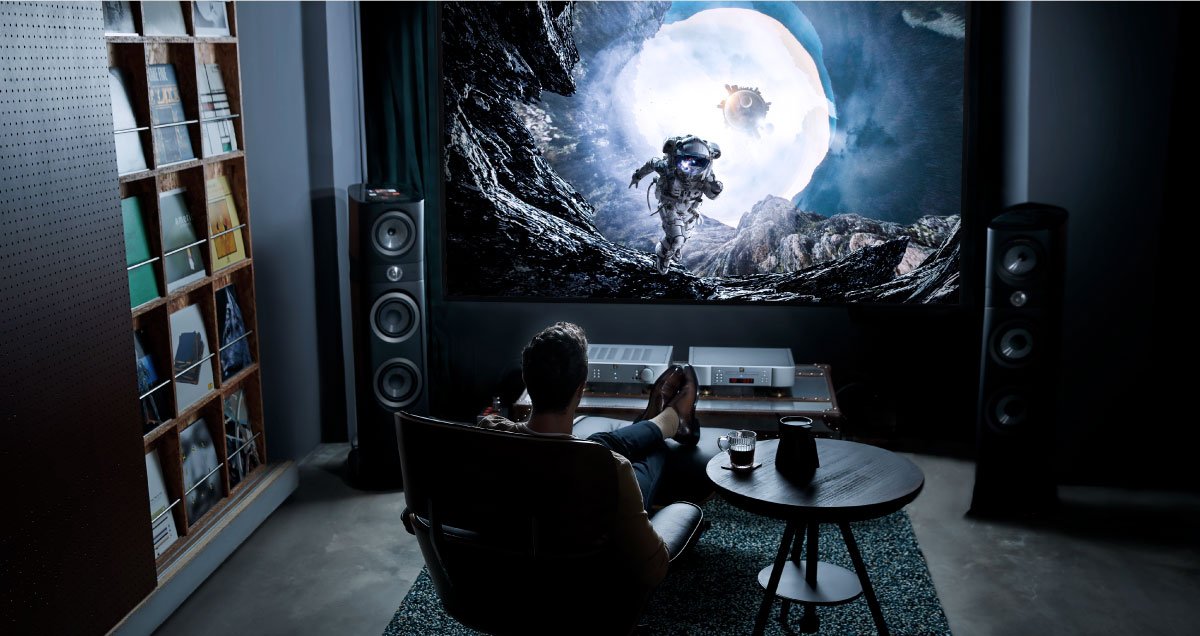
HDR content needs a true HDR projector to really shine
Today, all major projector manufacturers are developing HDR devices. With its excellent tech team, BenQ is dedicated to providing the most authentic image in terms of brightness, contrast, and color rendition. BenQ helps consumers enjoy an amazing viewing experience at home or anywhere else, one that is closer to the quality of a movie theater than ever.